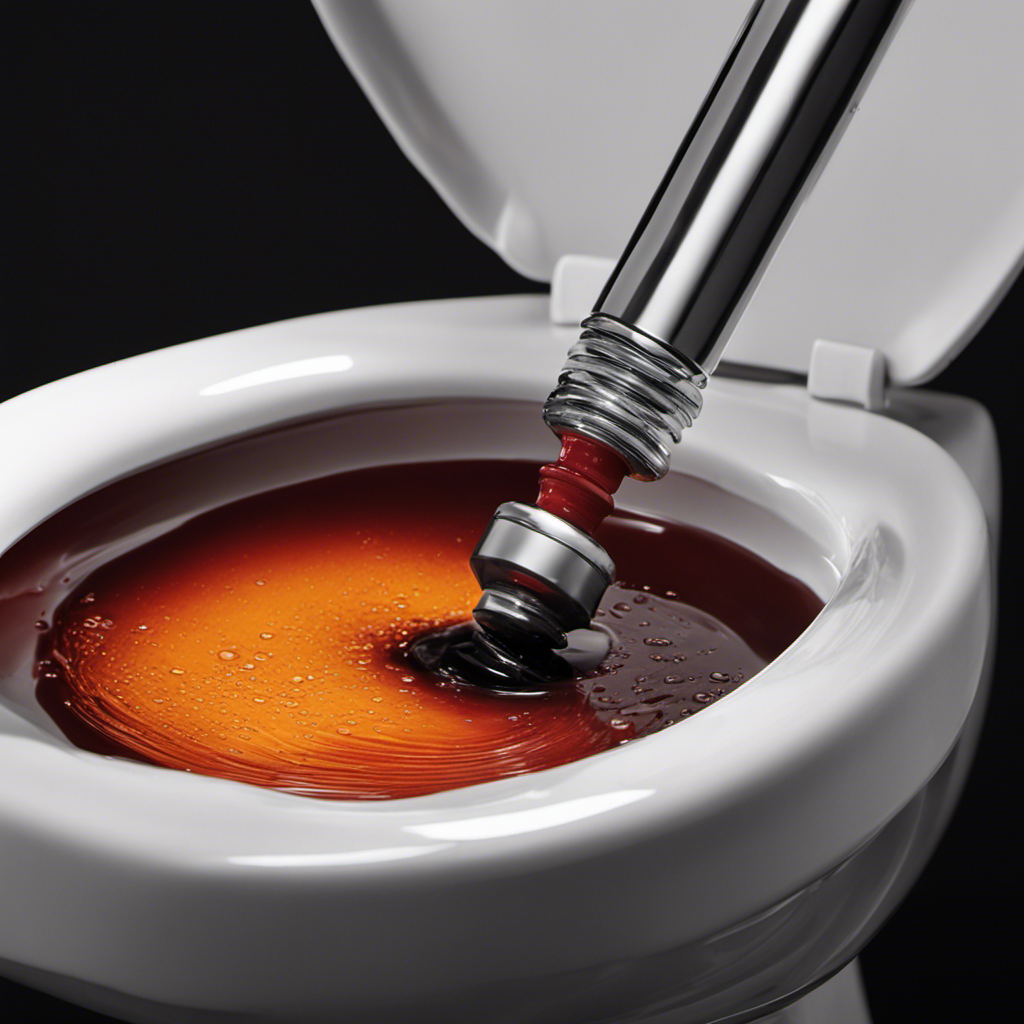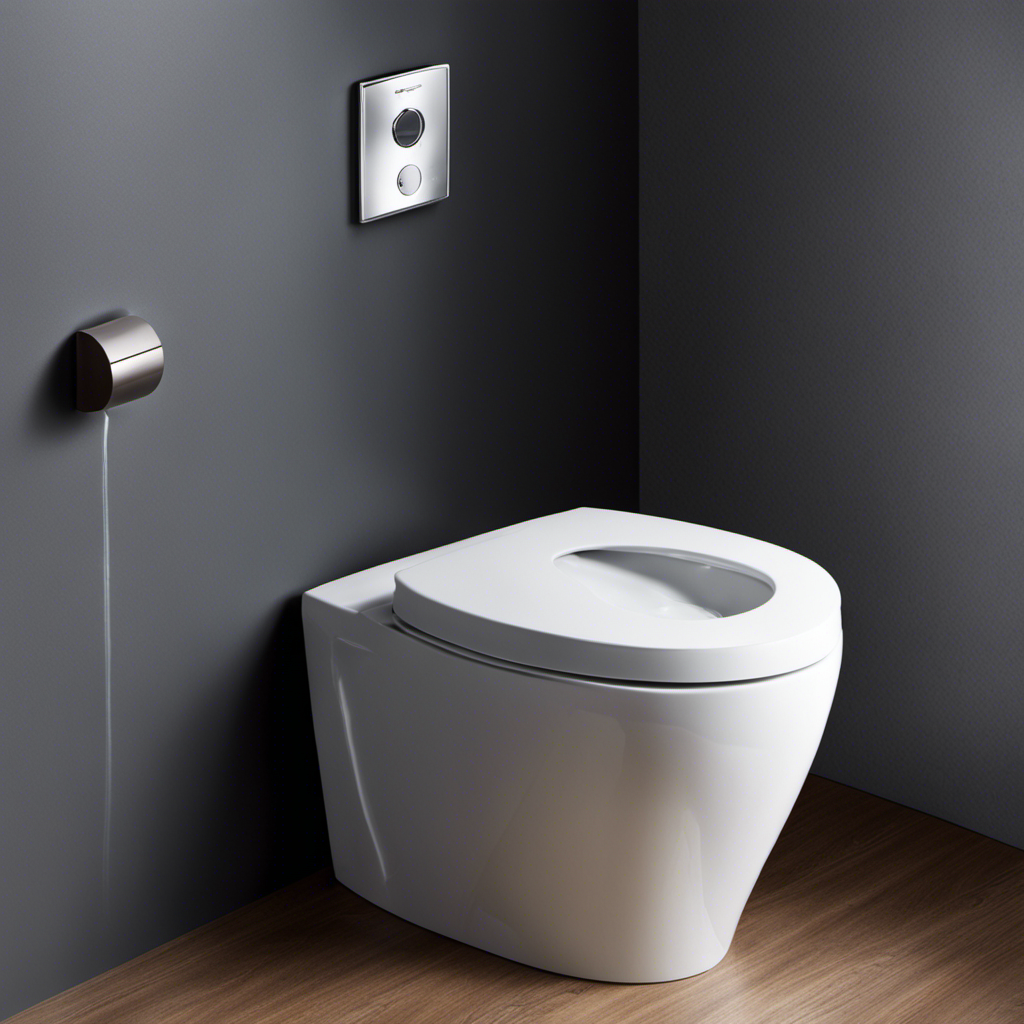I’ve always been fascinated by innovative and sustainable solutions to everyday problems. That’s why I was intrigued when I first learned about compost toilets.
You might be wondering, what exactly is a compost toilet? Well, let me tell you. It’s a modern alternative to traditional flush toilets that uses decomposition to turn human waste into nutrient-rich compost.
In this article, we’ll explore the benefits, workings, types, and environmental impact of compost toilets, as well as the necessary maintenance and care.
So, let’s dive in and explore the world of compost toilets together.
Key Takeaways
- Compost toilets save money on water bills.
- Compost toilets reduce environmental impact.
- Compost toilets eliminate the need for water-intensive flushing.
- Compost toilets produce nutrient-rich compost.
Benefits of Using a Compost Toilet
Using a compost toilet can save you money on water bills and reduce your environmental impact. The benefits of composting are numerous and well-documented.
By diverting human waste away from traditional sewage systems, compost toilets eliminate the need for water-intensive flushing. This not only reduces water consumption but also lowers the cost of water bills.
Moreover, composting toilets offer a sustainable solution by converting waste into valuable compost. The compost produced from human waste can be used as a nutrient-rich fertilizer for gardens and agricultural fields. This reduces the reliance on chemical fertilizers and promotes soil health.
Additionally, composting toilets help in conserving water resources, especially in areas facing water scarcity.
Overall, the use of compost toilets has significant cost savings and environmental benefits.
How Compost Toilets Work
To understand how these toilets work, it’s helpful to know the basic principles of composting. Compost toilet design is based on the idea of turning human waste into nutrient-rich compost through natural decomposition.
When you use a compost toilet, the waste is collected in a container beneath the toilet seat. To promote composting, a balance of carbon-rich materials, like sawdust or wood chips, and nitrogen-rich materials, like urine and feces, is necessary. The carbon-rich materials help control odor and absorb moisture, while the nitrogen-rich materials provide the necessary nutrients for decomposition.
Over time, bacteria and other microorganisms break down the waste, turning it into compost. It’s important to regularly add the right mix of composting materials to maintain the composting process and ensure the end product is safe and usable.
Types of Compost Toilets
One type of composting toilet, known as a self-contained unit, combines the waste collection and composting processes into a single system. This type of composting toilet is designed to efficiently break down human waste and transform it into nutrient-rich compost.
The self-contained unit operates by using specific composting materials, such as sawdust or coconut coir, to cover the waste and facilitate the composting process. The composting materials help to create an environment that promotes the growth of beneficial bacteria and microorganisms, which break down the waste into compost.
Additionally, the composting process requires a specific composting temperature range of 110 to 140 degrees Fahrenheit to achieve optimal decomposition. This temperature range ensures that any harmful pathogens present in the waste are effectively destroyed, resulting in safe and sanitary compost.
- Efficiently breaks down waste
- Uses specific composting materials
- Promotes growth of beneficial bacteria
- Requires specific composting temperature range
Composting Process in a Compost Toilet
You can efficiently break down waste in a composting toilet by ensuring the composting materials and temperature range are properly maintained. Composting techniques play a crucial role in the decomposition process within a compost toilet. By providing the right balance of carbon-rich (brown) and nitrogen-rich (green) materials, you create an ideal environment for aerobic bacteria to thrive. These bacteria break down the organic matter through the process of decomposition. Temperature also plays a significant role in the composting process, as it affects the rate of decomposition. Ideally, the temperature should be between 40-60°C (104-140°F) to facilitate optimal microbial activity. The table below outlines the key factors involved in the composting process in a compost toilet.
| Composting Material | Carbon/Nitrogen Ratio | Optimal Temperature Range |
|---|---|---|
| Brown (e.g., leaves, straw) | High carbon content | 40-60°C (104-140°F) |
| Green (e.g., food scraps, grass clippings) | High nitrogen content | |
| Water | Moisture content |
Maintenance and Care for Compost Toilets
Maintaining and caring for a composting toilet involves regular monitoring of composting materials and temperature levels. To ensure optimal performance and cleanliness, follow these cleaning procedures and troubleshooting tips:
- Regularly turn the composting materials with a compost turning tool to promote proper aeration and decomposition.
- Monitor moisture levels and adjust as necessary to maintain a moist but not overly wet environment.
- Add bulking agents like sawdust or coconut coir to help balance the carbon-to-nitrogen ratio and aid in the composting process.
- If odor issues arise, add more bulking agents or adjust the moisture levels to prevent excessive odor.
By following these cleaning procedures and troubleshooting tips, you can ensure that your composting toilet functions efficiently and effectively.
Now, let’s explore the environmental impact of compost toilets.
Environmental Impact of Compost Toilets
Compost toilets offer several environmental benefits.
Firstly, they greatly reduce waste by converting human waste into compost, which can be used as a natural fertilizer.
Secondly, the compost produced by these toilets is rich in nutrients and can greatly enhance the quality of soil, promoting healthy plant growth.
Lastly, compost toilets also help conserve water by eliminating the need for flushing, making them a sustainable and eco-friendly sanitation option.
Waste Reduction Benefits
Using a compost toilet can significantly reduce waste and the need for traditional sewage systems. Composting benefits and sustainable sanitation are key advantages of this eco-friendly solution. Here are some compelling reasons to consider compost toilets:
-
Environmental preservation: Composting waste prevents it from ending up in landfills, reducing greenhouse gas emissions and soil contamination.
-
Water conservation: Compost toilets require little to no water for flushing, helping to conserve this precious resource.
-
Nutrient-rich soil: The composting process creates nutrient-rich soil that can be used for gardening and agriculture, promoting sustainable food production.
-
Cost-effective: Compost toilets eliminate the need for costly sewage infrastructure and maintenance, making them a more affordable long-term solution.
These benefits demonstrate how compost toilets offer a sustainable and practical approach to sanitation, reducing waste and promoting environmental stewardship.
Soil Enrichment Potential
The nutrient-rich soil created by this eco-friendly solution can greatly enhance the productivity of gardens and agriculture.
Compost toilets are not only a sustainable way to manage human waste but also have significant benefits for soil fertility. The process of composting breaks down organic matter into nutrient-rich compost, which can be used as a natural fertilizer.
This compost is rich in essential nutrients like nitrogen, phosphorus, and potassium, which are vital for plant growth. When this compost is added to gardens or agricultural fields, it replenishes the soil with these essential nutrients, improving soil fertility and promoting healthy plant growth.
Additionally, the composting process helps to maintain the nutrient cycle, as organic matter is broken down and recycled back into the soil. This ensures that nutrients are not lost but instead are continuously cycled and made available for plants to utilize.
Water Conservation Advantages
By utilizing a compost toilet, you can conserve water and reduce your environmental impact. Compost toilets are a sustainable sanitation solution that offer several advantages in terms of water efficiency. Here are four reasons why compost toilets are an excellent choice for water conservation:
- Compost toilets require little to no water for flushing, saving thousands of gallons of water per year.
- The urine diversion system in compost toilets separates liquid waste, reducing the amount of water needed for composting.
- The composting process in these toilets naturally breaks down waste, eliminating the need for water-intensive sewage treatment facilities.
- The resulting compost can be used as a valuable resource for soil enrichment, reducing the need for synthetic fertilizers and conserving water in agricultural practices.
Frequently Asked Questions
Can I Use a Compost Toilet in a Residential Setting?
Yes, you can use a compost toilet in a residential setting. It offers numerous benefits such as reducing water usage, minimizing waste, and producing nutrient-rich compost that can be used for gardening.
Are Compost Toilets Legal in All Areas?
Compost toilets may be subject to composting regulations, and their legality in all areas can vary. However, they offer significant environmental benefits, such as reducing water consumption and producing nutrient-rich compost.
How Often Do I Need to Empty the Compost From a Compost Toilet?
Emptying frequency of compost from a compost toilet depends on various factors, such as usage and composting process. It is recommended to empty the compost every 6-12 months to allow for proper decomposition and maintenance.
Can a Compost Toilet Be Used in Cold Climates?
In cold climates, a compost toilet can be a great solution for sustainable waste management. The benefits include reducing water usage and creating nutrient-rich compost. To maintain it, insulate the system and ensure proper airflow.
Are There Any Health Risks Associated With Using a Compost Toilet?
There are no significant health risks associated with using a compost toilet. In fact, there are numerous health benefits, such as reducing water usage and preventing the spread of harmful pathogens in traditional sewage systems. Additionally, compost toilets have a positive environmental impact by recycling waste into valuable fertilizer.
Conclusion
In conclusion, compost toilets offer a unique and eco-friendly solution for waste management. These innovative systems effectively convert human waste into valuable compost, reducing the strain on traditional sewage systems and minimizing environmental impact.
The composting process, though not glamorous, is scientifically proven to be efficient and hygienic. With proper maintenance and care, compost toilets can provide a sustainable and odor-free alternative to conventional toilets.
Embracing this technology can contribute to a more sustainable future for all.










